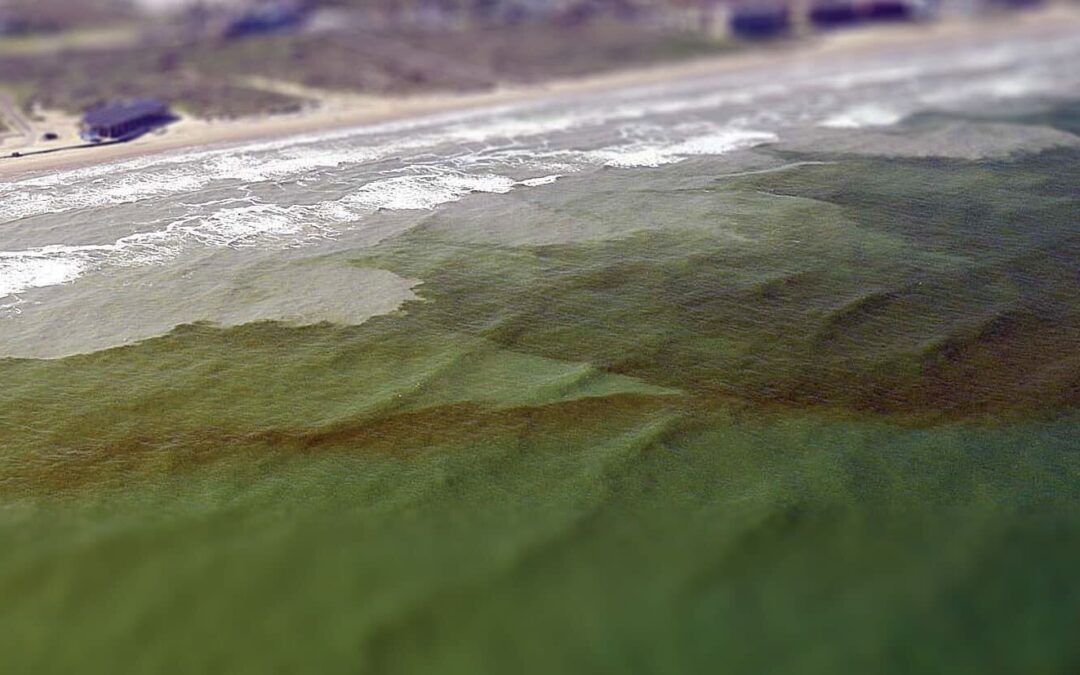From 9/11 to COVID-19: A Brief History of FDA Emergency Use Authorization
Cross-posted from COVID-19 and The Law, where it originally appeared on January 14, 2021.
By Jonathan Iwry
The ongoing fight against COVID-19 has thrown a spotlight on the Food and Drug Administration (FDA) and its power to grant emergency use authorizations (EUAs). EUA authority permits FDA to authorize formally unapproved products for temporary use as emergency countermeasures against threats to public health and safety.
Under § 564 of the Food, Drug, and Cosmetic Act (FD&C Act), use of FDA’s EUA authority requires a determination that an emergency exists by secretaries of the Department of Homeland Security, the Department of Defense, or the Department of Health and Human Services (HHS), as well as a declaration by the HHS Secretary that emergency circumstances exist warranting the issuance of EUAs. Each issuance of an EUA requires that FDA conclude that:
- it is reasonable to believe that a given product “may be effective” as an emergency countermeasure,
- the known and potential benefits of authorization outweigh the known and potential risks, and
- no formally approved alternatives are available at the time.
Annie Kapnick’s post on COVID-19 and FDA’s EUA authority provides a helpful overview of FDA’s emergency powers and their use in response to the pandemic. A brief look at the history of FDA’s emergency powers, including key events leading up to their enactment — Thalidomide, swine flu, AIDS, and 9/11 — offers perspective on the situation facing FDA today and its implications for the future. The history of EUA illustrates how its use today against COVID-19 involves fundamental questions about the role of public officials, scientific expertise, and administrative norms in times of crisis.
The pre-history of EUA
The first event to foreshadow the major themes surrounding FDA’s EUA power was the Thalidomide tragedy of the mid-20th century. In the 1950s, a new drug called Thalidomide was put into circulation in West Germany and other countries as a treatment for morning sickness. The next decade would reveal that the drug resulted in severe birth defects, with known cases numbering in the tens of thousands. The drug’s introduction to market is remembered as one of the worst public health disasters in recent times. It underscored the importance of strict standards of clinical review in approving new food and drug products, and remains a key reference point for FDA regulators, emphasizing the importance of the agency’s extensive and thorough formal approval process.
Fast forward to 1976, when reports of cases involving a new strain of influenza A (the same family of flu viruses that caused the flu pandemic of 1918) prompted fears of a possible “swine flu” pandemic. President Gerald Ford pushed for a first-ever national vaccination program — shortly before starting his reelection campaign. After millions had been vaccinated, the public was alarmed by reports that the vaccine might be causing Guillain-Barré syndrome. And ultimately, a pandemic never materialized.
In their post-mortem study, Richard Neustadt and Harvey Fineberg described the swine flu episode as a policymaking disaster; yet they also expressed concern that the American public and policymakers would wrongly oversimplify the event in their memory as a case of government overreaction and overstepping, and that they would thus over-learn the dangers of responding too swiftly to fears of a pandemic. (Some would argue that this concern did not bear out, as nothing was learned at all.)
Next, the AIDS crisis gave rise to an early precursor to EUA authority. In the late 1980s, public health experts suggested that an investigational drug called DDI might prove useful for AIDS patients unable to tolerate other medications. Many objected that DDI lacked formal approval and was not guaranteed to be safe and effective; others countered that the risks of breaking protocol by issuing a drug lacking formal approval paled in comparison to the number of lives that could be saved. Impatient with FDA regulators’ conservative approach, Dr. Anthony Fauci, Director of the National Institute of Allergy and Infectious Diseases, proposed a new “parallel track” system to administer DDI to eligible patients while continuing to study the drug. Other measures for circumventing FDA’s formal approval process already existed at the time, but this proposal attracted the attention of President George H.W. Bush, whose support encouraged FDA to adopt the process and administer DDI to those in need.
The enactment and early years of EUA
Ultimately, it was the War on Terror that would give rise to emergency use authorization. After the events of September 11, 2001 and subsequent anthrax mail attacks, Congress enacted the Project Bioshield Act of 2004. The act called for billions of dollars in appropriations for purchasing vaccines in preparation for a bioterror attack, and for stockpiling of emergency countermeasures. To be able to act rapidly in an emergency, Congress allowed FDA to authorize formally unapproved products for emergency use against a threat to public health and safety (subject to a declaration of emergency by HHS). The record indicates that Congress was focused on the threat of bioterror specifically, not on preparing for a naturally-occurring pandemic.
FDA’s newfound EUA authority would be used relatively sparingly for the first 16 years following its enactment. During that time, its most extensive use was in combating the H1N1 swine flu pandemic of 2009 by authorizing medical equipment and existing influenza drugs. Health policy experts would look back on the use of EUA against H1N1 as an overall success. It would also be used (pursuant to an amendment allowing for preemptive EUAs) to authorize occasional countermeasures in anticipation of MERS, Ebola, Zika, and other epidemics, none of which ultimately materialized in the United States.
EUAs against COVID-19
Then came COVID-19. In February 2020, HHS Secretary Alex Azar declared the pandemic a national health emergency warranting emergency use of in vitro diagnostics, followed by subsequent declarations in March warranting emergency use of other countermeasures. Since then, FDA has issued nearly 400 EUAs for personal protective equipment, medical equipment, in vitro diagnostic products, drug products, and, most notably, vaccines (compared to 22 EUAs issued in response to H1N1 in 2009). An EUA had never been granted for a brand-new vaccine before; the only vaccine ever to have received an EUA prior to the current pandemic was AVA, an anthrax vaccine that had already been formally approved for other purposes when it was granted an EUA in 2005. This, combined with the stakes of administering a vaccine to people who are otherwise healthy, led FDA to commit itself to heightened standards of review, or “EUA plus,” in evaluating a COVID-19 vaccine for emergency authorization. Two vaccines have been authorized thus far: one by Pfizer-BioNTech on December 11, 2020, and another by Moderna on December 18, 2020.
FDA’s exercise of discretion in issuing EUAs has not been without controversy, and the politicization of the pandemic by President Donald Trump has added a political dimension to FDA’s decision making as an administrative agency run by a presidential appointee. Many have criticized the White House for encroaching on FDA’s independence and failing to uphold basic standards of respect for scientific evidence and decision-making autonomy by technical experts. Trump notoriously pressured FDA officials into authorizing chloroquine and hydroxychloroquine, anti-malarial drugs that many believed might pose substantial risks for COVID-19 patients. The EUA came only days after Trump publicly endorsed the drugs; FDA revoked it months later. Public health experts were similarly concerned by FDA’s decision to authorize SARS-CoV-2 convalescent plasma on the eve of the Republican National Convention. Even FDA’s decision to grant its first vaccine authorization to Pfizer-BioNTech was somewhat controversial: White House Chief of Staff Mark Meadows allegedly contacted FDA Commissioner Stephen Hahn the day the vaccine would be authorized, demanding his resignation if it was not authorized by end of day.
Yet even when making decisions free of overt political interference, FDA has confronted difficult decisions in exercising its discretion to grant EUAs. In the spring of 2020, for instance, FDA decided to address widespread testing shortages by issuing “umbrella” EUAs for entire categories of diagnostic and antibody tests (as well as masks and other protective equipment) ex ante — allowing those tests to come to market before reviewing them on a case-by-case basis. In doing so, FDA essentially made a value judgment that the risk of allowing unreliable tests to come to market — and thus the risk of contributing to inaccurate data about the pandemic — was outweighed by the value of having more testing data at all.
Historical reflections
Looking back through the history of EUA, two key themes emerge. The first concerns the influence of the President on FDA decision making: sometimes in ways that seem motivated by the public interest, other times by political or personal interest. As the swine flu affair of 1976 demonstrates, President Trump is not the first president to have pressed for a speedy vaccination effort while running for reelection. As long as health regulators are answerable to political officials, there will always be some possibility of political influence. This reflects a deep and fundamental tension between respecting technical expertise and ensuring that technical experts are held accountable to elected officials (and, ultimately, to the public will).
Second, this history points up an inherent ethical dilemma between protecting individuals and benefiting the collective in times of crisis — between cautious restraint and urgent pragmatism. How should FDA weigh the costs to individuals posed by unapproved and potentially harmful products against the benefit to society in addressing a public health emergency quickly? What degree of risk are health regulators justified in imposing on individuals for the sake of a promising but uncertain solution to a pandemic? Even when a drug or vaccine might seem to carry a low risk of serious side effects, the decision to authorize that product takes a stance on this dilemma, rather than finding a way around it. There will always be some tension between those who are willing to depart from ordinary protocol to save lives quickly (as in the case of the AIDS crisis) and those whose primary goal is to avoid authorizing the next Thalidomide.
Beyond COVID-19
Lawmakers and policymakers place great value in precedent, whether written or historical. There is almost no precedent to guide FDA’s use of this relatively new power, let alone during the greatest public health crisis the agency has ever faced. On the contrary, the history of EUAs points up essential dilemmas that aren’t going away, and that will have to be grappled with in emergencies to come.
These questions are not unique to FDA. Much has been written generally about the role of agency norms and institutional dynamics in the administrative state. Others have discussed the myriad violations of norms of democratic governance by the Trump administration (arguably the defining legacy of the Trump years). These issues cannot be resolved by looking to the law; they will inevitably require hard judgments about how to balance deference to scientific expertise with public accountability, how to integrate empirical analysis and value judgments, and how to weigh our competing values in times of crisis.
FDA’s emergency powers underscore the impact these questions have on the public welfare — and demonstrate that the way we answer them can literally be a matter of life and death.






